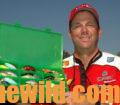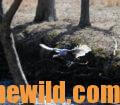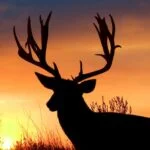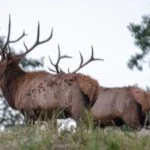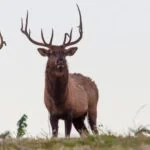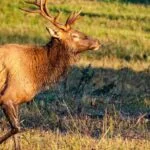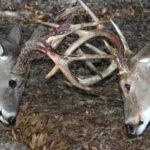Editor’s Note: Alex Rutledge
(https://www.facebook.com/pg/AmericanRootsOutdoors/about/?ref=page_internal) of Birch Tree, Missouri, a master turkey hunter and one of the nation’s top turkey callers, has over 40 years of turkey-hunting experience and teaching about turkeys at seminars. Rutledge knows how to call turkeys, as proved by the many titles he’s accumulated competing in turkey-calling contests over the years, including winning national, regional and state contests. Growing up on a farm and hunting turkeys and other game animals all his life, Rutledge has met several tough-to-hunt turkeys that he considers his professors in the sport of turkey hunting.
The Pressured Lake Gobbler
I was hunting around a northern Arkansas lake for the first time and knew before I started hunting that the area had a lot of turkey hunting pressure.
* Don’t Try to Make a Tom Gobble Too Much – Just before first light, I owl-hooted and heard a turkey gobble from the roost. I didn’t try and make him gobble anymore. I’d learned that the more  times I made a turkey gobble when hunting highly-pressured gobblers, the more hunters he’d call in to where you were. Once I’d located that turkey, I moved as quietly as I possibly could to his roost tree.
times I made a turkey gobble when hunting highly-pressured gobblers, the more hunters he’d call in to where you were. Once I’d located that turkey, I moved as quietly as I possibly could to his roost tree.
* Listen for Where Hen turkeys are – When I got to within 150-200 yards of the turkey’s roost tree, I sat down to listen. I wanted to hear the hens that I felt sure were roosted close to him. I never wanted to make a call to a gobbler on the roost once I’d located him, until I knew where the hens were positioned. If I didn’t know where the hens were in relation to where the gobbler was roosted, I’d run the risk of flushing the hens out of the trees and spooking the gobbler. Once I got close to a gobbler on the roost, I’d wait to hear the hens start calling. Then I’d know the exact location of the hens and the gobbler before I tried to move any closer to the gobbler.
On this morning, when I heard the hens, I realized they were between me and the gobbler. If I moved any closer, I’d spook the hens and the gobbler. I also knew that because the hens were in-between me and the gobbler, that if I started calling loudly, when the hens flew down, they would call to the gobbler and call him away from me. They wouldn’t want him to get with a loud-mouthed hen that wasn’t a part of their flock.
* Tree Call Like a Hen – Then the hens started calling softly with tree calls. I began tree calling too, so that I sounded like a hen that was a part of that flock. The hens tree called back to me. When I heard the hens fly down from the roost, I started hearing other sounds – outboard motors and boats pushing water. Apparently other hunters had been sitting out on the lake, listening to the same gobbler I’d heard. When the other hunters in those other boats heard those hens fly down, those hunters started moving toward the shore in their boats, hoping to hunt the same gobbler I was trying to hunt. As soon as the boats touched the shore, I heard a wide variety of owl hoots coming from different callers. All these other hunters were attempting to make my tom gobble. I realized that the bird I was hunting wasn’t my gobbler yet, and that if I hoped to take him, I would have to hunt him in the heavy traffic of all these other hunters.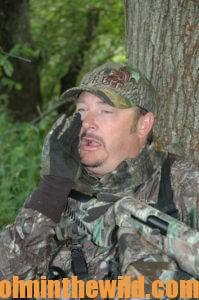
In just a few seconds, I had hens flying down in front of me and walking past me. I felt certain I’d get a shot at the gobbler. I was in the prime spot to take the bird. Then suddenly, I saw the gobbler pitch out of a tree, fly down and land not 60 yards from me. I already could feel the warmth of the grease in the pot that I planned to use to cook that ole bird. I watched him hit the ground and begin to strut. Then from behind me came the sound, “shreeek yelllllp”- the worst imitation of a turkey hen yelp I’d ever heard in my life. Another hunter had moved close to both me and my turkey and was trying to call him.
After those terrible-sounding yelps, the woods were silent. The gobbler and the hens vanished without making a sound. I knew that the only way that hunter could get to me was to come over a hill. Evidently he’d called as soon as he reached the top of the hill. Apparently the turkeys had heard and seen him, and left the country.
* Hunt Precious Gobblers with Patience – I was really discouraged because I knew this bird was a “precious” gobbler. I define a “precious” gobbler as one that everyone was trying to take, and no one could. That was what gave the bird its title of “precious.” I quickly let the other hunter know I was in the woods and then made sure he could see me as I walked toward him. I yelled out, “Hey, there’s another hunter down here,” and we both knew that neither one of us would get to kill that turkey that morning. Well, the other hunter knew he wasn’t going to kill that turkey that morning. I watched the other hunter walk off. I returned to the same spot I’d been calling from, since I’d learned over the years that many times patience would take more gobblers that had a tremendous amount of hunting pressure 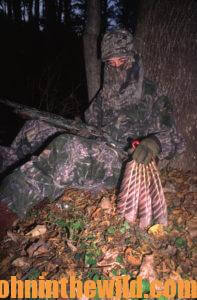 than sophisticated calling would. As I sat there in the silent woods, I heard outboard motors cranking up on the lake, turkey hunters climbing into boats, and the hunter’s leaving to look for another gobbling bird to terrify.
than sophisticated calling would. As I sat there in the silent woods, I heard outboard motors cranking up on the lake, turkey hunters climbing into boats, and the hunter’s leaving to look for another gobbling bird to terrify.
After I’d sat still for about 45 minutes, I heard a turkey gobble about a 1/2-mile away. I didn’t make a sound but got up and started moving toward where I’d heard the turkey gobble. I assumed that turkey was the same one I’d been hunting earlier in the morning that had been roosting close to four hens. I’d seen the four hens when they walked past me, but I’d only barely spotted the gobbler. But I’d heard him drumming before the other hunters spooked. Moving as quietly as I could to reach the gobbler and believing he still had the four hens with him, I started calling very softly with hen yelps once I got within calling range. The tom gobbled back to me.
I knew that when a bird answered my call quickly like this gobbler had after just three hen yelps, the bird liked the calls I was making. Of course that didn’t mean that he would come to me, it just meant that he liked the calls that I was giving. While feeling pretty good about my chances for taking this ole tom, suddenly I heard a diesel-powered truck nearby. I didn’t know a county road was there until later after my hunt. I heard the truck stop and in a few minutes saw hunters walking down through the woods. About the time I saw the hunters, the birds spotted them too. Three hens flew out of the area. Since I knew originally four hens and one gobbler had been together, I assumed that the gobbler and one hen still should be on the ground somewhere. When the other hunters saw those three hens fly off, they walked back to their truck. Next I heard their truck crank up and then pull away.
I sat quietly in the same place I’d called from for 20 minutes. Then I heard a hen make a yelp, and next a turkey drum. The hen yelped three more times, and once again the gobbler drummed. I gave a really, really, soft, low, single, muted yelp. The hen yelped back to me three times, and I answered her with three soft yelps. I could tell she was coming to me, scratching the leaves, feeding and purring. When I finally spotted her, I also saw the gobbler behind her, strutting, drumming and blown-up like a bullfrog. When the gobbler was within 45 steps, I aimed and fired. That Pressured Lake Gobbler took a ride out of the woods in my turkey vest.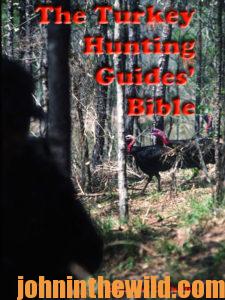
To learn more about turkey hunting, check out John E. Phillips’s book, “The Turkey Hunting Guides’ Bible,” at https://amzn.to/2ZlSXEP for Kindle and print versions. Click here for Audible version.
Tomorrow: What Alex Rutledge Learned to Hunt Pressured Turkeys Successfully

